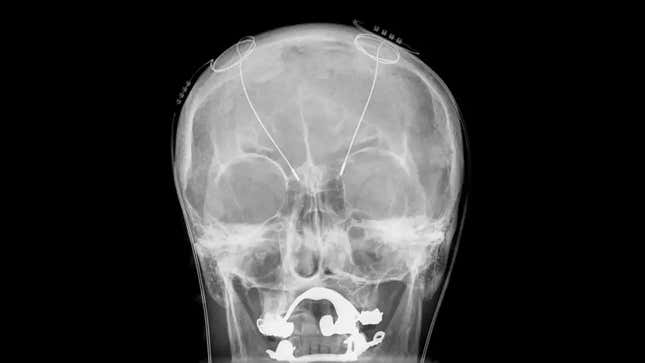
The idea of using electricity to treat mental illness has understandably come with some stigma, given the grim and sometimes abusive history of “shock therapy” in the earliest days of psychiatry. But in the modern day, various methods of brain stimulation have shown real promise in improving depression and other illnesses that otherwise looked untreatable. These treatments, it’s theorized, can somewhat reset or stabilize the erratic brain activity associated with neuropsychiatric disorders. And scientists seem to be getting better at fine-tuning this tech.
Advertisement
Last October, a research team published results showing that their personalized deep brain stimulation technique, which involves implanting a pacemaker-like device in the brain, had successfully helped treat a woman’s decades-long bout with severe depression. “When I first received stimulation, the ‘aha’ moment occurred, I felt the most intensely joyous sensation, and my depression was a distant nightmare for a moment,” the woman, identified as Sarah, said at a press conference announcing the findings.
This technology, for now, is still very expensive, invasive, and likely only suitable for people without any other options. But in time, what we learn from patients like Sarah may lead to new discoveries about how the brain works and how to help people with depression.
Services Marketplace – Listings, Bookings & Reviews